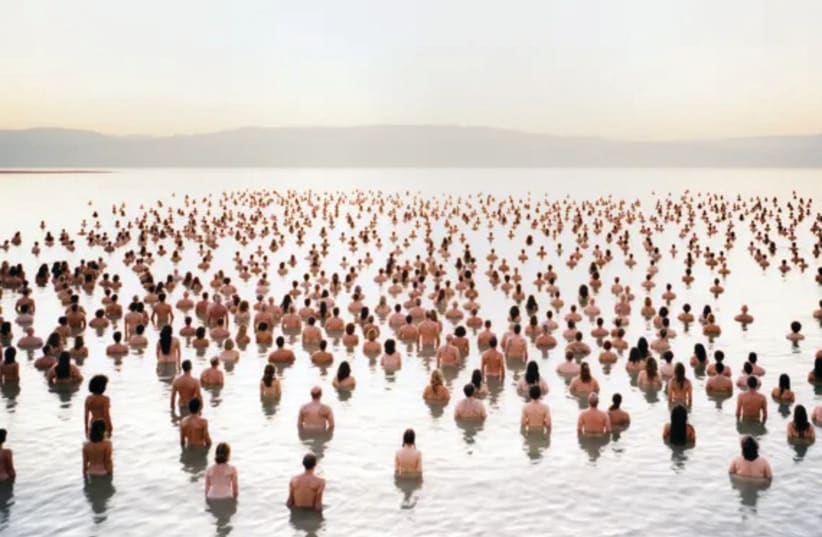Tunick, who is known for his mass gathering photos of nude subjects, has previously brought attention to environmental issues plaguing the Dead Sea. In 2011 Tunick came to Israel through a Kickstarter campaign and photographed over 1200 volunteers nude in the Dead Sea. This photograph helped the Dead Sea to be considered the Eighth Wonder of the World, corresponding to increased tourism and an economic boom in the region.
However, according to co-founder of the Dead Sea Revival Project and founder of the Dead Sea Museum, Ari Fruchter, “environmental issues in the region have now gone from bad to worse.”
Tunick returned five years ago to draw attention to sinkholes that destroyed the Mineral and Ein Gedi beaches, including the location of the 2011 shoot.
Today the northern basin of the sea has been overrun by sinkholes due to continuously receding water levels, resulting in very little beach in the area.
Fruchter explains that receding water levels are “due 70% from evaporation and 30% from industry that pumps out the water for mining salts.”
If trends continue at this rate, Fruchter believes that the Dead Sea will be almost if not completely gone in 50 years.
The museum he’s spearheading, to be built in Arad, will simulate the experience of visiting the Dead Sea for when it will no longer be possible due to sinkholes and receding water levels. The architecture of the building occurs both in and out of the water, with aspects mimicking the alluring experience of walking on water. Tunick’s photographs will also be featured prominently with the museum.
For Fruchter, the motivation to save the Dead Sea stems from its unique therapeutic properties and long history.
“We’re the hi-tech nation so we should use all of the resources we have to protect it, preserve it and rejuvenate it,” Fruchter said.
The efforts to save the Dead Sea will be facilitated mainly through a Headstart campaign that is aiming to raise at least NIS 120,000.
“This is the first time that anyone in the world who cares about the Dead Sea can support it,” Fruchter said. “Until now there was no dollar that anyone could spend that would directly have a positive impact on the Dead Sea.”
The Headstart page can be found: here.
Tunick is also looking for nude models for his next artistic installation. Those 18 and above and interested in participating should email SpencerTunickDeadSea2021@gmail.com with a fully clothed self-photograph, mailing address, age, gender, and occupation.
Those looking to preview the museum prior to opening can visit: https://www.thedeadseamuseum.com/ which includes a virtual replica of the project created by the design firm, Neumann Heiner Architects.
